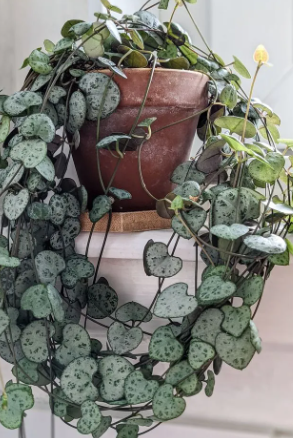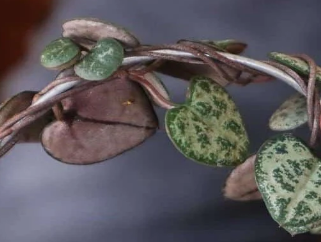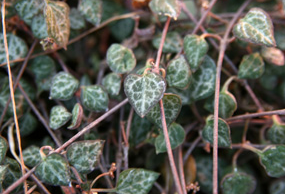Rosary Vine Plant
Rosary Vine (Ceropegia woodii) is a vine growing 2-3 feet long, hardy in USDA zones 10-11, with fast growth in well-drained, sandy soil, requiring bright, indirect light and low moisture, and it is neither edible nor medicinal.

Habit
Vine
Height
30-100 cm
Growth
Fast
Soil
Well-drained, sandy
Shade
Bright, indirect
Moisture
Low
Edible
No
Medicinal
No
Origin
South Africa
Climatic Condition
Tropical, Semi-Arid
Temperature (°)
15-30°C
Humidity (%)
40-70%
Potting media
Peat, compost
Fertilizers
Organic fertilizer
Watering
Low
Plant Weight
500 g - 1 kg
Flowering Time
Rare flowering
Soil Ph level
6.0 - 7.5
Water Ph level
6.0 - 7.5
Soil EC
1-2 dS/m
Yield Per Plant
Ornamental
NPK ratio
10:10:10
life Span
Perennial
Health Benefits
Ornamental, hanging plant
Suggested Grow Media or Potting Mix ?
50% peat, 25% perlite, 25% compost
Suggested Fertigation/Fertilizers
Fertilize every 2-3 weeks with a balanced fertilizer.
Common Diseases and Remedies
Root Rot, Leaf Spot, Powdery Mildew, Aphids, Mealybugs
Improve soil drainage, prune affected leaves, use neem oil
Fungicides, systemic insecticides
HEALTH BENEFITS
Rosary vine (Ceropegia woodii) has several health benefits, including air purification, stress reduction, and ornamental value.
Air purification
· Removes indoor pollutants like formaldehyde and benzene.
· Purifies the air from toxins, mainly carbon monoxide.
Primarily an ornamental plant, but some species are used in folk medicine for wound healing.

